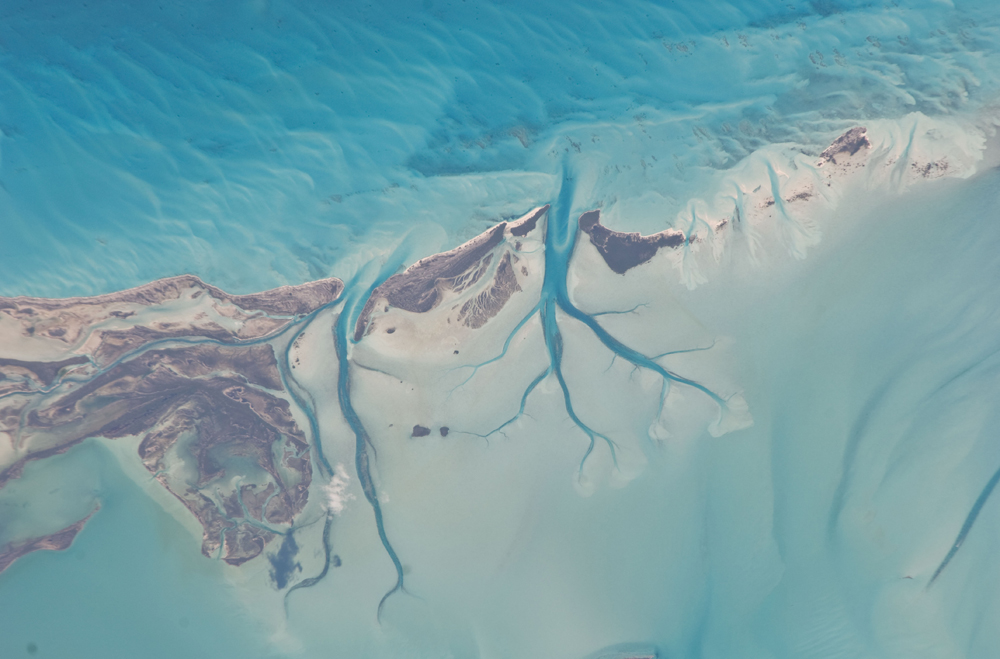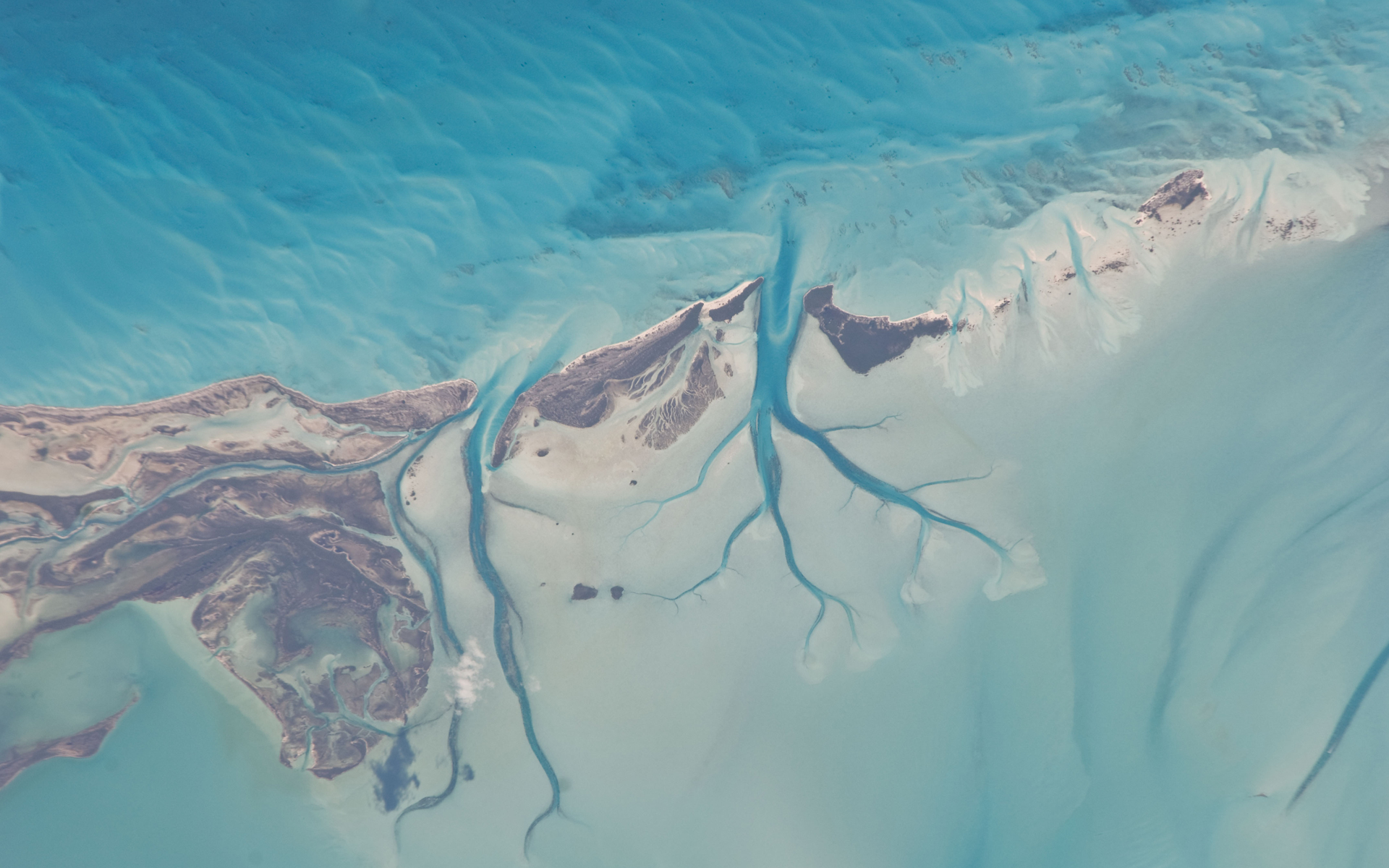Long Island, Bahamas

| Credit | Image taken by an Expedition 26 crew member onboard the International Space Station, courtesy of NASA. |
|---|---|
| Language |
|
This image, showing tidal flats and channels on Long Island, in the Bahamas, was taken by an Expedition 26 crew member onboard the International Space Station. The islands of the Bahamas in the Caribbean Sea are situated on large platforms made mainly from carbonate sediments ringed by fringing reefs — the islands themselves are only the parts of the platform currently exposed above sea level. The sediments are formed mostly from the skeletal remains of organisms settling to the sea floor; over geologic time, these sediments will consolidate to form carbonate sedimentary rocks such as limestone. Darker blue shows deeper water, while light blue-green shows shallow water on the tidal flat. The continually exposed parts of the island are seen in brown, a result of soil formation and vegetation growth (left).


